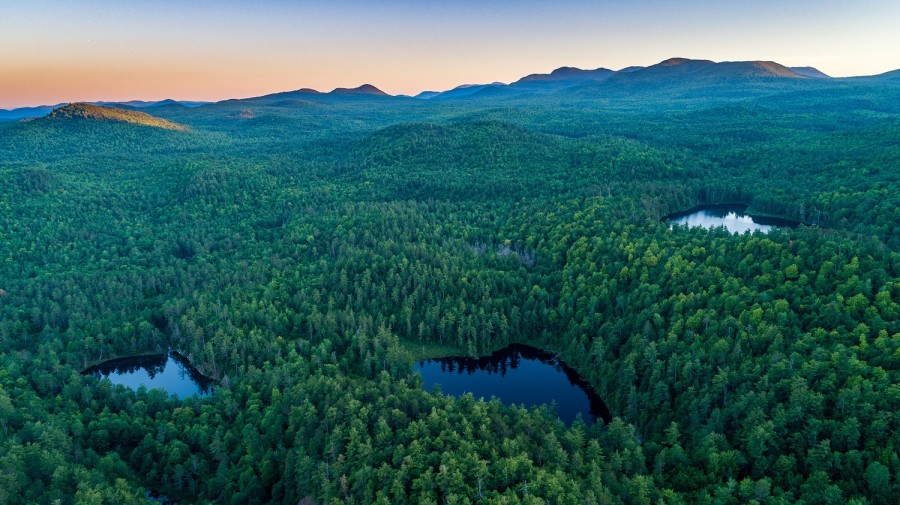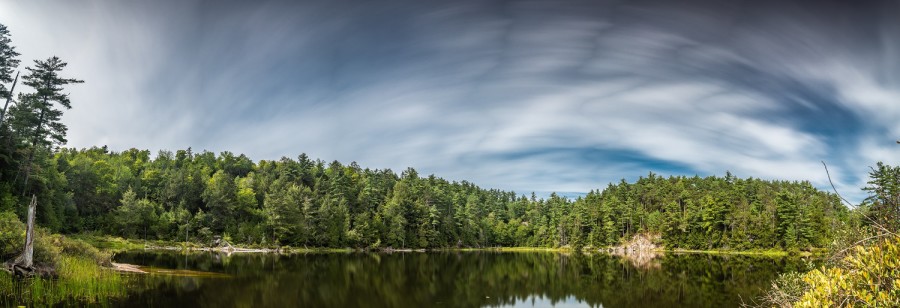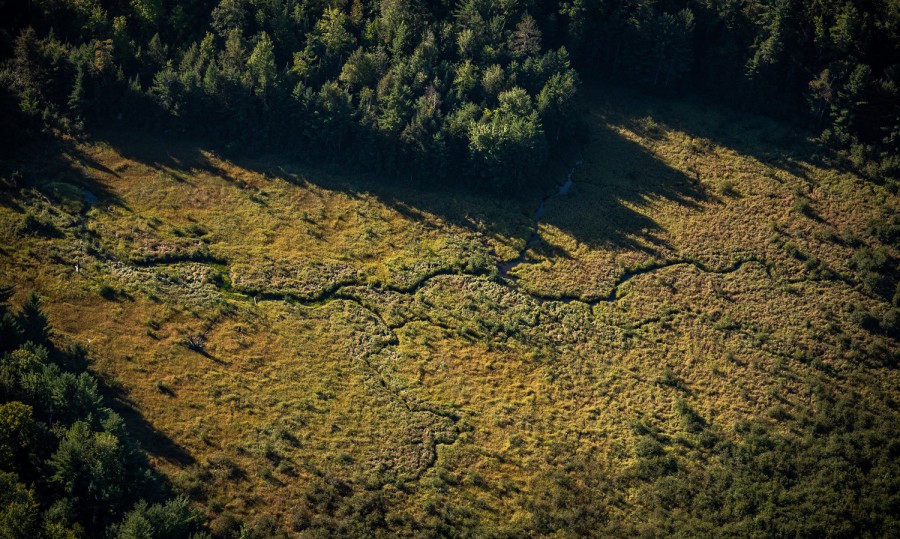
By Zack Porter, Outreach and Communications Coordinator at Northeast Wilderness Trust
“Full of ecological delights and rugged wild country, Eagle Mountain is a rare gem: a low-elevation wilderness landscape that adds important diversity to protected areas within the Adirondack Park’s boundaries.”
– Brett Engstrom, Ecologist and member of Northeast Wilderness Trust’s Board of Directors
The first thing you notice about Northeast Wilderness Trust’s proposed Eagle Mountain Wilderness Preserve is its size. Gaze out from the summit of Eagle Mountain after a strenuous bushwhack, and the scale is difficult to comprehend. Follow the arc of a peregrine falcon into the distance, and the vastness of this low-elevation, biologically rich landscape is unveiled, the canopy unfurling at your feet, stretching unbroken towards the High Peaks of the Adirondacks to the west.
But to fully grasp the ecological value of this 2,500-acre property in the Western Champlain Hills, you have to shift your gaze down to your feet. There, visible in the mud are the tracks of a bobcat stalking a hare; of a moose wandering off into the marshes along Doyle Creek; of a slithering otter making its way down to the North Branch of the Boquet River. And there along the bank, right next to where the otter dove under, you make a surprise discovery of a midden of empty shells of the Eastern Pearlshell, a rare freshwater mussel found in only a few locations in New York State. Suffering from centuries of habitat loss due to dams and deteriorating water quality, the Eastern Pearlshell is a sure sign of an exceptional wild river ecosystem and healthy populations of native brook trout.
Sandwiched between New York State’s Taylor Pond Wild Forest and Jay Mountain Wilderness, Eagle Mountain is situated at the heart of a large forest block that connects the High Peaks to lower elevation lands near Lake Champlain. The Preserve protects core habitat for wildlife as they stair-step across this important landscape, traversing elevational gradients with the changing seasons and as the climate warms.
Glancing up again, your eye catches the gnarled silhouettes of red oak and white pine clinging to the rocky ridge above you. Nearby, towering red pines may be a century old or more. Dependent on fire for requisite mineral soil seed germination, red pine forests like this one are increasingly rare in New York State because of a long history of suppressing natural fires on this relatively dry, leeward side of the Adirondacks. They are a silent reminder that the forests of western North America aren’t the only ones that rely on fire to survive.
Northeast Wilderness Trust has a unique opportunity to purchase and conserve this remarkable landscape in perpetuity, but a project of this size requires a team effort.
We’re fortunate to have the support of our friends at Conservation Alliance whose mission is to engage businesses to fund and partner with organizations like ours, to protect and restore America’s wild places. Conservation Alliance support for Eagle Mountain early in the project has been vital to advancing the fundraising success of this project.
Additional partners include Adirondack Land Trust, which will hold the forever-wild easement, and Champlain Area Trails, which will construct routes for low-impact public access on foot. We are also grateful to Adirondack Wild for helping to raise awareness of this iconic and vulnerable wildland.
With your help Eagle Mountain can be #ForeverWild.





